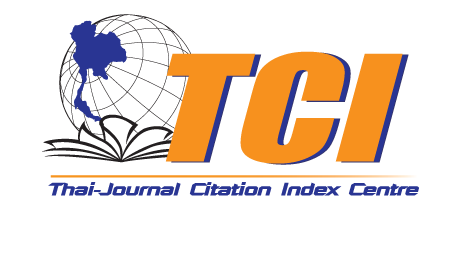BOOSTING CREATIVE LEADERSHIP IN DIGITAL COMMUNITY GROWTH WITH FIVE BALA DHAMMA
Keywords:
Creative Leadership, Five Bala Dhamma Principles, Community Development, Digital EraAbstract
Background and Objectives: Buddhism was a social and cultural resource that influenced Thai society in many ways, from education and daily life to traditions and cultural practices that reflected the nation's identity. Buddhist teachings helped build cultural and spiritual resilience in responding to social changes such as demographic and economic shifts. The principle of the "Middle Path" enabled individuals to adapt and respond to changes in a constructive way, fostering peace in society. Buddhism also emphasized conflict management with patience, honesty, and fairness-qualities that were fundamental to good leadership. The development of leaders in this direction ensured that communities grew sustainably and strengthened in economic, social, and cultural aspects, thus establishing a solid foundation for the development of peaceful and sustainable communities and societies. The objective of this study was to examine the level of empowering creative leadership for community development in the digital era, to assess the level of applying the Five Bala Dhamma principles based on Buddhist teachings, to investigate the relationship between the empowering creative leadership and community development in the digital era through the application of the Five Bala Dhamma principles based on Buddhist teachings, and to develop recommendations for enhancing the empowering creative leadership for community development in the digital era by applying the Five Bala Dhamma principles based on Buddhist teachings.
Methodology: This research aimed to study the level of enhancing creative leadership potential for community development in the digital era, the level of applying the Buddhist principles of Five Bala Dhamma as a foundation, the relationship between enhancing creative leadership potential for community development in the digital era through the application of the Buddhist principles of Five Bala Dhamma, and to propose recommendations for enhancing creative leadership potential for community development in the digital era based on the application of the Buddhist principles of Five Bala Dhamma. This study employed a mixed-methods approach. The sample group consisted of 291 students and community leaders. The sample size was determined using Krejcie and Morgan's table. The research tool was a questionnaire with a 5-point Likert scale. The statistics used for the quantitative data analysis were the mean, standard deviation, and Pearson correlation coefficient. For the qualitative research, 15 key informants were selected purposefully. The data collection tool was a semi-structured questionnaire.
The content analysis method was used for synthesizing the data, and the quality was checked using triangulation techniques.
Main Results: The results revealed that the level of enhancing creative leadership potential for community development in the digital era was high ( = 4.10, S.D. = 0.32). The level of applying the Buddhist principles of Five Bala Dhamma as a foundation was also high ( = 4.07, S.D. = 0.32). The relationship between enhancing creative leadership potential for community development in the digital era through the application of the Buddhist principles of Five Bala Dhamma was moderate and statistically significant at the .01 level. The recommendations for development were as follows: 1) Continuous enhancement of creative leadership potential; 2) Integration of Five Bala Dhamma principles in practice; 3) Application of technology for community development; and 4) Building partnerships and cooperation at all levels.
Involvement to Buddhadhamma: This article explored Applied Buddhism and its role in cultivating wisdom and morality to enhance leadership development. Grounded in the principles of Five Bala Dhamma, it used relevance within the contemporary organizational context. Buddhist principles served as a fundamental foundation for empowering and strengthening leaders.
Conclusions: The study suggested that continuous enhancement of leadership potential, integration of Five Bala Dhamma principles into practice, the use of technology for community development, and fostering cooperation at all levels were key to achieving sustainable success in community development in the digital era.
References
Chantra, M., Nilkote, R. & Boonloy, W. (2023). Visionary Leadership of School Administrators Affecting Morality and Transparency in School Operations under Chanthaburi Primary Educational Service Area Office 1. Journal of MCU Nakhondhat, 10(12), 120-129.
Cronbach, L. J. (1990). Essentials of Psychological Testing. (5th ed.). New York, United States: Harper Collins.
Likert, R. (1993). A Technique for the Measurement of Attitude. Chicago, United State: Rand Mc Nally.
National Education Act B.E. 2542. (1999).
Nilkote, R., Singsorn, N., Natthapat Saisena, N., Sukpom, T. & Papan, N. (2024). Knowledge Management and Empowering Professional Learning Communities Based on Buddhist Principles: The Dimension of Suppurisa Dhamma. Journal of Innovation Research on Education and Technology (JIRET), 2(3), 1-11.
Phra Phrombhuddhit (Prayoon Thammachitto). (2019). Religion and the Goal of Sustainable Development (SDGs). (2nd ed.). Bangkok, Thailand: Amarin Printing and Publishing Public Company Limited.
Rungjaroen, T. (2010). Professionalism in Education Management and Administration in the Era of Educational Reform. Bangkok, Thailand: Khao Fang.
Saisena, N., Nilkote, R., Hajaturus, A., Hajaturusand, S. & Jaruariyanon, W. (2024). Promotion of Buddhist Education for Lifelong Learning in Industrial Areas: Context of the Buddhist Monks of Pong Phai Temple, Tha Tum Subdistrict, Si Maha Phot District, Prachinburi Province. Journal of Modern Learning Development, 9(9), 591-607.
Sangsri, P. (2018). Buddhist methods and educational administration. Veridian E-Journal, Silpakorn University, 11(1), 1260-1270.
Singsorn, N., Sukpom, T., Nilkote, R., Rueangsri, W. & Papan, N. (2023). Community-Based Lifelong Learning According to the Buddhist Way: A Case Study of Wat Pa Lelai Worawihan, Mueang District, Suphanburi Province. Journal of Buddhist Anthropology, 8(4), 315-325.
Somdet Phra Phutthakohsachao (P.A. Payutto). (2016). Buddhism and Buddhist teachings. (31st ed.). Bangkok, Thailand: Dhammakaya Printing.
Sukpom, T. et al. (2024). Buddhist Spiritual Leadership in a Transformative Era: Reflecting on Experiences from the Study of Buddhist Holy Places. Journal of MCU Nakhondhat, 11(11), 254-264.
Watthana, S., Suyajai, P., Nilkote, R., Raksat, S. & Phansiri, P. (2021). Buddhism and the Way of Life of the Thai People in the Suvarnabhumi Region. Journal of Peace Studies and Social Transformation, 9(3), 950-963.

Downloads
Published
How to Cite
Issue
Section
License
Copyright (c) 2025 Journal of Buddhist Anthropology

This work is licensed under a Creative Commons Attribution-NonCommercial-NoDerivatives 4.0 International License.







